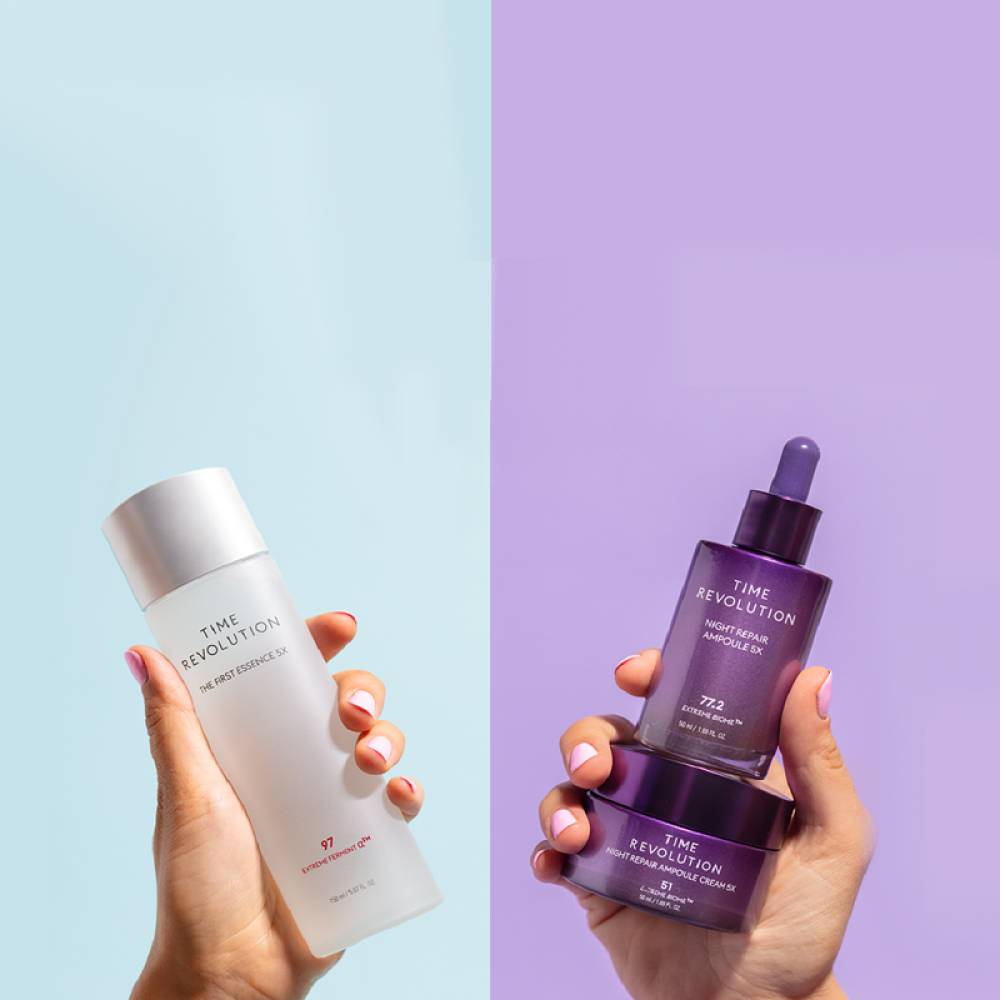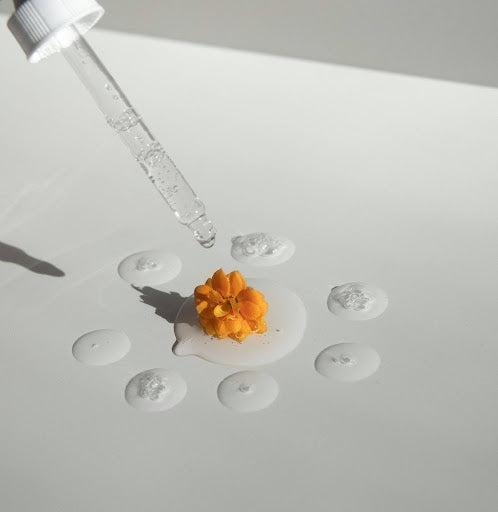In recent years, skincare enthusiasts have been intrigued by the potential benefits of snail mucin. This unique ingredient, derived from the secretion of snails, has gained popularity for its supposed ability to improve skin health. But is snail mucin good for your skin? In this article, we will explore the science behind snail mucin and its impact on skincare. So, let's dive into the details and separate fact from fiction.
Understanding Snail Mucin: What is it?
Snail mucin, also known as snail secretion filtrate, is a fascinating substance that has been gaining popularity in the skincare industry for its potential benefits. This viscous secretion is produced by snails to protect and repair their skin when injured, showcasing the remarkable regenerative properties of these creatures.
Snail mucin is not only rich in various components beneficial for human skin but also serves as a natural example of resilience and adaptability in the animal kingdom.
The Process of Extracting Snail Mucin
The extraction of snail mucin is a delicate and intricate process that involves skilled harvesters who understand the importance of maintaining the safety and purity of the final product. By gently stimulating the snails, they encourage the release of mucin, which is then meticulously collected, filtered, and purified to create high-quality skincare products. This process highlights the care and precision required to harness the potential benefits of snail mucin effectively.
Key Components of Snail Mucin
Snail mucin boasts a complex composition that includes several key components essential for skincare. Among these components are hydrating substances like hyaluronic acid, known for their ability to retain moisture in the skin, promoting a plump and supple complexion.
Additionally, glycosaminoglycans (GAGs) found in snail mucin enhance the skin's natural moisture retention capabilities and improve elasticity, contributing to a more youthful appearance.
Furthermore, the presence of antioxidants in snail mucin plays a crucial role in combating free radicals and shielding the skin from environmental damage, helping to maintain a healthy and radiant complexion. The inclusion of collagen and elastin, vital proteins for skin firmness and elasticity, further underscores the potential of snail mucin as a valuable ingredient in skincare formulations.
The Science Behind Snail Mucin and Skin Health
Now that we understand the basics of snail mucin, let's explore how it interacts with the skin and the potential benefits it offers.
Snail mucin, also known as snail secretion filtrate, is a popular ingredient in skincare products due to its unique composition. Rich in glycoproteins, hyaluronic acid, and antioxidants, snail mucin is believed to provide a wide range of benefits for the skin.
How Snail Mucin Interacts with the Skin
Snail mucin has a unique molecular structure that enables it to penetrate the skin easily. Once absorbed, it is thought to moisturize and nourish the skin from within, promoting a healthier complexion. Additionally, snail mucin may help stimulate collagen and elastin production, which can contribute to skin firmness and elasticity.
Moreover, snail mucin is known for its soothing and calming properties, making it suitable for sensitive or irritated skin. It can help reduce redness and inflammation, providing relief for conditions such as eczema and rosacea.
Potential Benefits of Snail Mucin for Skin
While scientific research on the benefits of snail mucin is limited, anecdotal evidence suggests that it may help with:
- Hydration: Snail mucin's hydrating properties can replenish moisture in dry and dehydrated skin.
- Wound healing: The proteins and growth factors in snail mucin may aid in skin regeneration and wound healing.
- Blemish reduction: Some individuals believe that snail mucin can help fade acne scars and hyperpigmentation.
- Anti-aging effects: The collagen and elastin in snail mucin may help improve skin elasticity and reduce the appearance of fine lines and wrinkles.
Overall, the potential benefits of snail mucin for skin health are vast, making it a sought-after ingredient in the world of skincare.
Debunking Myths About Snail Mucin
Despite the potential benefits, there are several common misconceptions surrounding snail mucin that warrant clarification.
Snail mucin, also known as snail secretion filtrate, has gained popularity in the skincare industry for its hydrating and skin-repairing properties. It is rich in nutrients such as hyaluronic acid, glycoprotein enzymes, and antimicrobial peptides, making it a versatile ingredient for addressing various skin concerns.
Addressing Common Misconceptions
One prevalent myth about snail mucin is that it is derived from live snails. However, snail mucin is extracted from carefully farmed snails without causing harm or distress to the animals. Some snail farms prioritize the well-being and comfort of their snails to ensure a high-quality and ethical product.
Snail mucin is harvested through a process where snails are placed on a mesh net in a dark and quiet environment, stimulating them to release their mucin. This secretion is then collected, filtered, and purified to create the final ingredient used in skincare products. The extraction process is non-invasive and ensures that the snails remain unharmed throughout.
The Truth About Snail Mucin Allergies
While snail mucin is generally well-tolerated, individuals with known shellfish allergies should exercise caution when using snail mucin products. Although rare, allergic reactions may occur due to similarities between shellfish and snail proteins. It is always advisable to perform a patch test before incorporating any new skincare product into your routine.
It's important to note that snail mucin undergoes rigorous testing and purification processes to ensure its safety and efficacy in skincare formulations. Many reputable skincare brands source their snail mucin from certified farms that adhere to strict quality standards, providing consumers with a reliable and sustainable product option.
Incorporating Snail Mucin into Your Skincare Routine
If you're considering adding snail mucin to your skincare regimen, here are a few factors to consider.
Snail mucin, also known as snail secretion filtrate, has gained popularity in the beauty industry for its hydrating, soothing, and skin-repairing properties. This natural ingredient is rich in nutrients like hyaluronic acid, glycoprotein enzymes, and peptides, making it a versatile addition to various skincare products. When sourced ethically and processed correctly, snail mucin can offer a range of benefits for all skin types, from improving hydration levels to promoting collagen production for a more youthful complexion.
Choosing the Right Snail Mucin Product
When selecting a snail mucin product, it's essential to opt for reputable brands that prioritize quality and safety. Look for products that undergo rigorous testing, have positive customer reviews, and contain a significant percentage of snail mucin for maximum potential benefits.
Additionally, consider the formulation of the product to ensure it meets your specific skincare needs. Some products may combine snail mucin with other beneficial ingredients like niacinamide for brightening or ceramides for strengthening the skin barrier. Understanding your skin concerns and goals can help you choose the most suitable snail mucin product for your routine.
Best Practices for Using Snail Mucin
To incorporate snail mucin into your routine effectively, follow these best practices:
- Start slowly: Introduce snail mucin gradually to assess your skin's reaction and tolerance.
- Perform a patch test: Apply a small amount of the product to a discreet area of your skin and observe for any adverse reactions.
- Follow instructions: Adhere to the usage guidelines provided by the manufacturer to ensure optimal results.
- Pair with compatible products: Use snail mucin in conjunction with other skincare products that complement its benefits.
- Practice consistency: Incorporate snail mucin into your routine consistently to experience potential long-term effects.
- Monitor your skin: Observe changes in your skin's condition and adjust your routine accordingly.
Risks and Considerations When Using Snail Mucin
While snail mucin is generally considered safe, it is important to be aware of potential side effects and who should avoid its use.
Snail mucin, also known as snail secretion filtrate, has gained popularity in the skincare world for its hydrating and skin-repairing properties. This ingredient is rich in glycoproteins, hyaluronic acid, and antioxidants, making it a promising addition to skincare routines.
Possible Side Effects of Snail Mucin
Although uncommon, some individuals may experience skin irritation, redness, or allergic reactions when using snail mucin. If any adverse reactions occur, discontinue use and consult a dermatologist.
On the flip side, many users have reported significant improvements in skin texture, hydration, and overall appearance after incorporating snail mucin into their skincare regimen. Its lightweight texture and non-greasy finish make it suitable for various skin types, including sensitive and acne-prone skin.
Who Should Avoid Snail Mucin?
Individuals with known shellfish allergies should avoid snail mucin products due to the possible cross-reactivity between the proteins in snails and shellfish.
Furthermore, if you have a history of skin sensitivity or are prone to allergic reactions, it is advisable to perform a patch test before using snail mucin products extensively. This simple step can help you determine if your skin reacts negatively to the ingredient.








